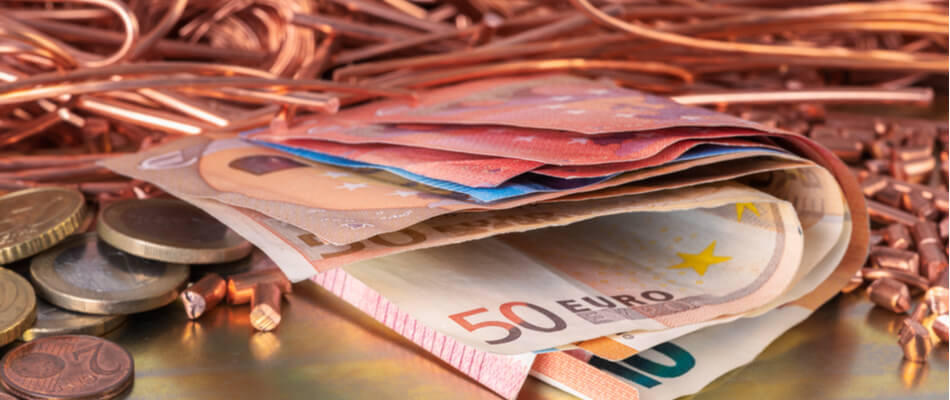What is investing in copper?
In recent years, investing in copper has become more popular, mainly because, unlike gold and silver , the price of copper has risen considerably. This has also made private individuals more interested. In addition, it is also a simple investment product.
In this case, it does not mean that you actually buy copper and have to store it in the attic, but that you invest in contracts of this raw material. By speculating on the price increase or decrease of copper, you can see how you as an investor choose the right entry moments.
There are several ways to trade copper, such as through an online broker or by using special software made available for this purpose.
What is copper?
Before you invest in copper, it might be useful to know what kind of material this is. Copper is a semi-precious metal that originally dates back to the historical period before the Egyptians and is therefore the first recognized metal for mankind. Copper has a red color and has been in the earth’s surface for more than 10,000 years, which is why it is used every day for many applications. Think of money, weapons, architecture, etc. The popularity of this material is mainly due to its conductive properties.
China is one of the largest buyers of copper in the world, mainly due to its use in the construction sector and the fact that this country has a huge consumer economy. The price of copper is therefore strongly correlated with the Chinese economy. Another reason for the increase in the price of copper has to do with Donald Trump, the President of the United States. The US is struggling with an increasingly poor infrastructure, which is why Trump has stated to invest one trillion dollars in American infrastructure. In 2017, the price of copper rose from $2.60 to $3.34.

What are the reasons to invest in copper?
The price of copper depends on several factors, including what exactly the price will do. This year, copper investors are confident about the price, which has been on an upward trend since 2018. There are several reasons behind this: a more stable economic trend in China, economic stimulus programs in the US and China, a weaker dollar and increasing activity in various sectors such as construction, industrial, energy and automotive.
These factors are expected to cause a rise in the price of copper:
There is an increasing demand for
In recent years, more and more electric cars have been on the road, and because they contain more copper than cars that run on petrol and diesel, the demand for copper on the market is increasing. Because the demand will only increase in the coming years, it is not an unwise choice to invest in copper in the long term. Your capital will also become more valuable in this way.
The rise of green energy
Another reason to invest in copper is the fact that more money is being invested in the growth of green energy. Many renewable energy sources require up to 5 times more copper than conventional systems. Therefore, the copper price can also increase sharply due to these causes.
There is a relatively small market
What certainly makes investing in copper interesting is that it is a relatively small market. The influence of certain large investors is much greater, precisely because, in contrast to gold and silver, copper is traded much more. The price will rise fairly quickly when the demand for copper increases. An advantage of this greater influence is that the fluctuations in the price are greater than with other listed commodities. Although you can more easily make a higher return, there are of course risks involved.
Trading in copper
By investing in a commodity like copper, you have a better chance of a higher return and a more stable balance in your capital. When the economy is in a bad period, there is a big chance that the price of copper will rise. Because this was the case in the financial crisis of 2008, both private and large investors were able to receive an attractive price gain. However, keep in mind that prices can also fall when the economy improves.
Compare brokers and start investing in commodities
Are you excited about investing in commodities, such as copper, after reading this article? Compare brokers where you can trade in commodities and find the broker that suits you best!